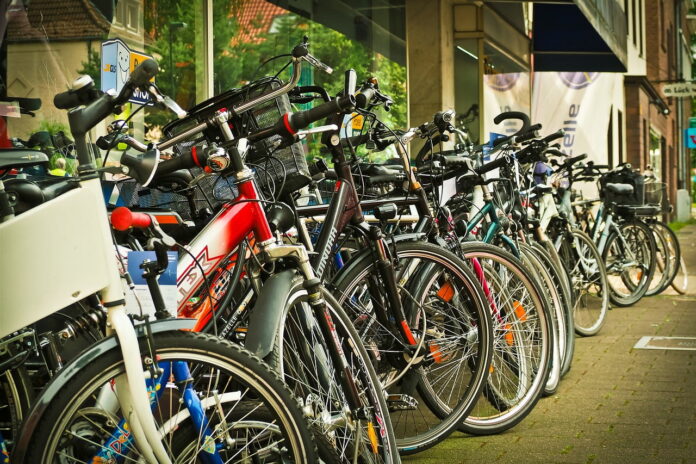Urban eco-transport is revolutionizing the way we navigate cityscapes, offering sustainable alternatives to traditional vehicular traffic. As cities become more congested and environmental concerns grow, urban planners and citizens alike are turning to innovative solutions to reduce carbon footprints and enhance the quality of urban life. Pedals, pods, and plants represent the triad of this new movement, each playing a crucial role in the development of eco-friendly transport networks.
Pedal power, with bicycles leading the charge, offers a zero-emission mode of transport that is both efficient and health-promoting. Pods, or autonomous electric shuttles, are emerging as a smart solution for mass transit, capable of reducing traffic congestion and pollution. Meanwhile, integrating plants into the urban transport ecosystem not only beautifies the environment but also contributes to cleaner air and reduced urban heat islands. Together, these elements form the backbone of a sustainable urban mobility strategy.
Pedal Power: How Bicycles are Shaping the Future of City Commuting
Bicycles have long been a staple of urban transport, but their significance is growing as cities actively seek to reduce reliance on cars. Cycling infrastructure is expanding, with dedicated bike lanes, bike-sharing programs, and secure parking facilities becoming more prevalent. These initiatives encourage residents to choose cycling over driving, leading to a decrease in traffic congestion and emissions. In cities like Amsterdam and Copenhagen, bicycles have become the preferred mode of transport, with more than 50% of residents commuting by bike.
The health benefits of cycling are also significant, contributing to the physical well-being of city dwellers. Regular cycling can reduce the risk of chronic diseases, improve mental health, and increase overall fitness levels. Moreover, the economic advantages are clear: cycling is cost-effective, reducing the financial burden of transportation for individuals and governments alike. As cities continue to invest in cycling infrastructure, the future of urban commuting looks increasingly pedal-powered.
Pods on the Move: The Rise of Autonomous Electric Shuttles in Urban Centers
Autonomous electric shuttles, or pods, are gaining traction as a flexible and eco-friendly alternative to traditional buses and taxis. These driverless vehicles are designed to operate on pre-determined routes, providing on-demand service to passengers. They are particularly well-suited for last-mile connectivity, bridging the gap between major transport hubs and final destinations. Cities like Las Vegas and Singapore have already begun trials, showcasing the potential of pods to transform urban transit.
The environmental impact of these electric shuttles is significant, as they produce zero tailpipe emissions. This is crucial in the fight against urban air pollution and climate change. Additionally, the use of advanced sensors and navigation systems in pods can enhance safety and reduce the likelihood of accidents. As technology advances and costs decrease, it is expected that pods will become a common sight in cities around the world, complementing existing public transport systems.
Integrating Greenery: The Role of Plants in Urban Transport Ecosystems
Plants are an essential component of the urban transport ecosystem, serving multiple functions that extend beyond aesthetics. Greenery can be integrated into transport infrastructure in various ways, such as green roofs on bus shelters, vertical gardens along transit corridors, and tree-lined cycling paths. These elements contribute to the creation of more pleasant and inviting urban environments, encouraging the use of eco-transport options.
Beyond beautification, plants play a critical role in improving air quality by absorbing pollutants and producing oxygen. They also help mitigate the urban heat island effect, providing cooler areas for commuters. The psychological benefits of green spaces are well-documented, with studies showing that exposure to nature can reduce stress and enhance mood. As cities become denser, the integration of plants into transport infrastructure is vital for maintaining and improving urban livability.
The Symbiotic Relationship Between Cycling Infrastructure and Urban Green Spaces
The relationship between cycling infrastructure and urban green spaces is inherently symbiotic. The development of bike paths often goes hand in hand with the creation of green corridors, which serve as both transportation routes and recreational spaces. These corridors not only facilitate safe and enjoyable cycling experiences but also connect different parts of the city, promoting biodiversity and ecological connectivity.
Urban green spaces can also act as nodes along cycling routes, providing rest stops and social gathering points. This integration encourages a sense of community among cyclists and non-cyclists alike, fostering a culture of sustainability and active living. The presence of green spaces along cycling routes has been shown to increase the frequency of cycling, highlighting the importance of this relationship in promoting eco-transport.
The Road Ahead for Sustainable Urban Mobility Solutions
The future of urban transport lies in the harmonious integration of pedals, pods, and plants. As cities continue to grapple with the challenges of congestion, pollution, and space constraints, these eco-transport solutions offer a path forward that is both sustainable and adaptable. By embracing bicycles, autonomous electric shuttles, and green infrastructure, urban centers can create transport ecosystems that are efficient, environmentally friendly, and conducive to the well-being of their inhabitants.
The road ahead requires continued innovation, investment, and collaboration among city planners, businesses, and communities. It is through these joint efforts that the vision of a greener, cleaner, and more connected urban landscape can be realized. As we move towards this future, it is clear that the new face of urban eco-transport will be defined by the synergy of pedals, pods, and plants.
